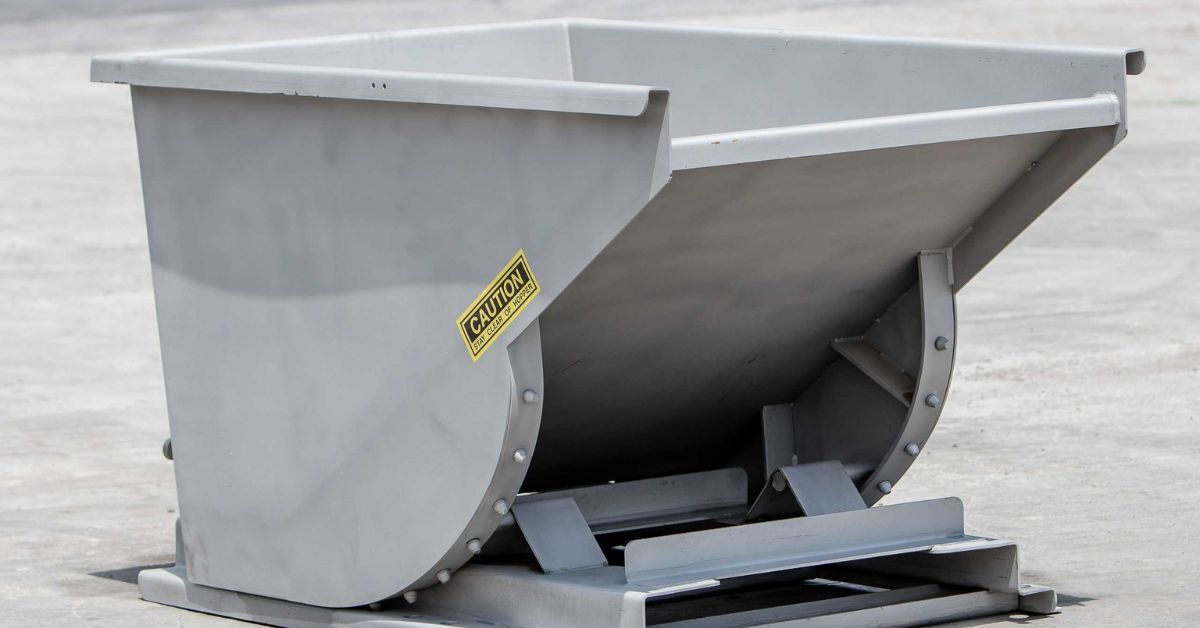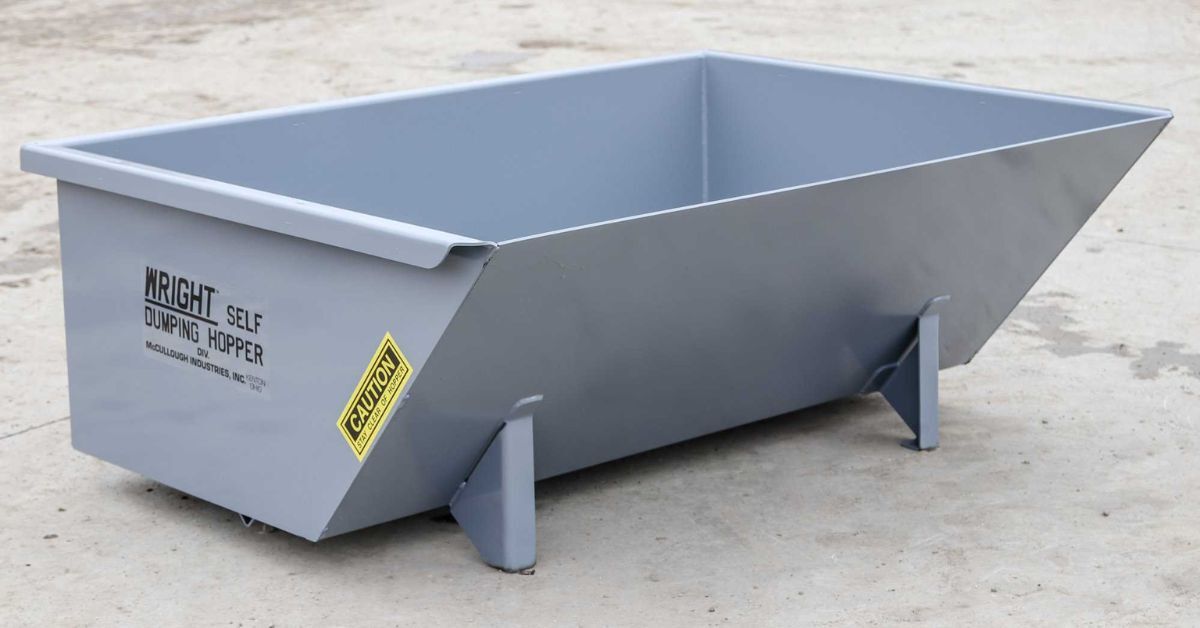Posted by Express Steel on Sep 30th 2025
How Commercial Crews Save Time With Hoppers
Every minute saved on a jobsite contributes to meeting deadlines, reducing labor costs, and boosting overall project profitability. Commercial crews constantly seek methods and tools that streamline their workflow, and skid steer attachments can enhance the versatility of equipment.
A hopper attachment, in particular, transforms your skid steer into a material handling powerhouse. Here, we’ll explain how commercial crews save time with hoppers and why they’re worth the investment.
What Is a Hopper?
A hopper is a specialized attachment designed to connect to machinery, such as a skid steer loader. It functions as a large, durable container for holding and transporting materials around a jobsite. Typically constructed from heavy-gauge steel, these attachments can handle everything from loose aggregates to bulky construction debris.
The hopper attaches to the front of the skid steer, using the machine’s hydraulic system for lifting and movement. Operators can scoop materials directly into the container, move them across different terrains, and then position them for dumping.
Boost Efficiency in Material Transportation
Moving bulk materials such as gravel, sand, dirt, or demolition debris creates bottlenecks on a jobsite. Traditional methods, such as using wheelbarrows or relying on manual labor, require multiple trips and expend considerable energy.
A skid steer hopper streamlines this process, allowing one operator to move large volumes of material quickly and safely. This consolidates the task and frees up crew members to focus on other duties.
Consolidate Debris Removal
Jobsites naturally generate a steady stream of waste, from wood scraps and drywall pieces to concrete chunks and packaging. Instead of letting debris accumulate in piles that require a major cleanup effort later, you can use a hopper for continuous clearing.
Place the hopper in a central work zone where crew members can easily toss in waste as they work. When the hopper fills, your skid steer operator can quickly transport it to the main dumpster for disposal. This method keeps the work area cleaner and turns a group cleanup job into a simple, one-person task.
Streamline Landscaping Tasks
Landscaping projects involve moving several materials, including mulch, topsoil, stone, and sod. A hopper simplifies the distribution of these materials across a property. For example, your crew can load a hopper with mulch and transport it directly to garden beds, allowing for precise and efficient placement. This method eliminates the need to dump a large pile on a driveway and then slowly move it with wheelbarrows.

Simplify Concrete and Masonry Work
Concrete and masonry tasks demand a steady supply of materials, such as mixed concrete, mortar, and blocks. An interruption in this supply chain can bring the entire operation to a halt. However, commercial crews save time with hoppers by having a reliable way to maintain a material supply.
Instead of mixing materials far from the application point or relying on small-batch transportation, you can use a hopper to deliver what you need directly to the work area. This continuous flow of materials keeps your skilled labor productive and on task.
Transport Blocks and Bricks
Moving pallets of blocks or bricks around a jobsite with a forklift works, but a hopper offers more flexibility. You can load a hopper with the necessary number of blocks and transport them over uneven terrain where a forklift might struggle. This is especially useful on new construction sites without paved surfaces. The hopper delivers the materials right to the masons’ workstations, minimizing the distance they need to carry heavy blocks.
Expedite Site Cleanup and Waste Management
A clean jobsite is a safe and efficient one. Loose debris, scrap materials, and accumulated trash create tripping hazards and can slow down progress. Using hoppers for waste management makes cleanup an integrated part of the daily workflow rather than a separate, time-consuming task.
Handle Demolition Debris
During demolition or renovation projects, crews generate a large volume of heavy, bulky debris. A durable, steel-constructed hopper can handle materials such as broken concrete, rebar, and splintered wood.
Your skid steer operator can maneuver into tight spaces, scoop up the debris, and transport it to a large roll-off dumpster. This mechanical assistance saves your crew from the back-breaking labor of manually loading heavy materials, reduces the risk of injury, and clears the site much faster.
Manage General Construction Waste
Throughout the construction process, your site accumulates a mix of lighter waste, such as packaging, plastic sheeting, and offcuts. Placing a trash hopper in a high-traffic area encourages your crew to dispose of waste immediately. This simple strategy prevents trash from scattering across the site due to wind or foot traffic.
At the end of the day or when it gets full, a crew member can empty the hopper in minutes, leaving the site clean and ready for the next day’s work. This organized system improves site safety and presents a more professional appearance to clients.

Choose the Right Hopper for Your Needs
The material, size, and design of a hopper determine its best application. Therefore, selecting the right type of attachment for your typical tasks ensures you reap the maximum time-saving benefits. For instance, a heavy-duty steel hopper suits construction debris, while a self-dumping model adds another layer of efficiency to the disposal process. Let’s take a closer look at popular hopper options.
Self-Dumping Hoppers
Self-dumping hoppers give you a major boost in speed and safety. The operator dumps the contents without leaving the skid steer’s cab. After positioning the hopper over the dumpster or drop zone, the operator activates the dumping mechanism. The hopper often snaps back into an upright and locked position automatically once you release the contents. This feature eliminates the need for a second person to unlatch the container, keeping the operator safely inside the machine and streamlining the dump cycle.
Steel Hoppers
For heavy-duty applications, choose a robust steel hopper. Thick-gauge steel and reinforced corners enable these hoppers to withstand the rigors of commercial construction. You can transport abrasive materials such as rock, broken concrete, and scrap metal without damaging the attachment. Their durable design guarantees a long service life, making them dependable assets for your toughest material handling challenges.
Trash Hoppers
Trash hoppers handle general site cleanup and manage lighter waste materials. You still get durable construction, but these hoppers focus on volume to hold bulky, lightweight debris such as wood scraps, cardboard, and other construction refuse. This organized approach streamlines the final disposal process, keeping the jobsite cleaner and more orderly throughout the project.
Get Your Hopper!
Ready to boost your jobsite’s efficiency? At Express Steel, we offer a range of durable steel, self-dumping, and trash hoppers designed to meet the demands of any commercial project. Explore our full collection of American-made hoppers, and find the perfect attachment to help your crew save time!


